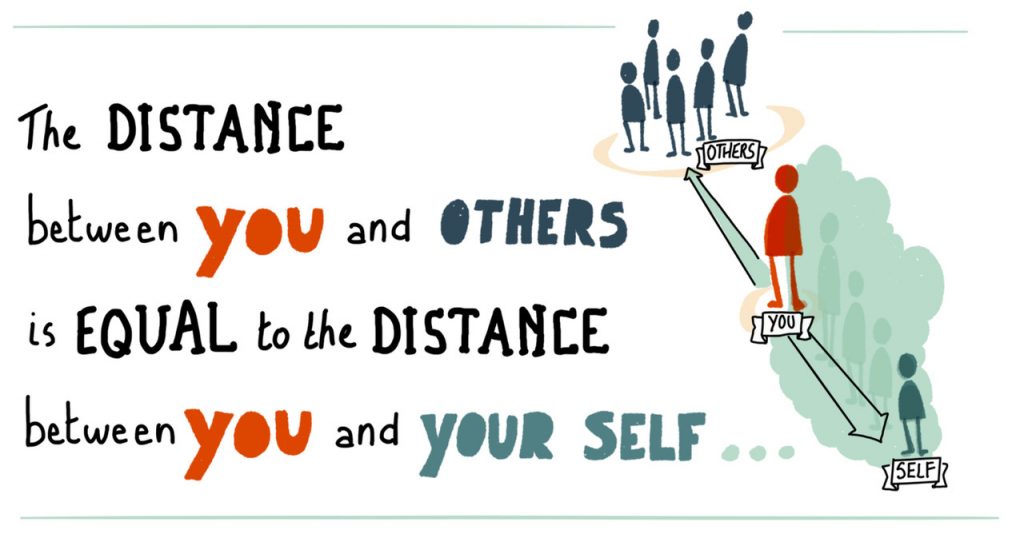Two days a month, over a 6-month period, Visuality founder and visual facilitator, Mara Callaert, took part in a 12-day organizational coach training, by Philippe Bailleur. Going into the training, Mara thought she knew what she was in for, having attended prior trainings in NLP and change making, where she had learned methods and tools. But, as with many things in life, the training wasn’t as expected, and it positively changed her outlook and approach to working with clients.
Here are her top 3 takeaways on how to be a better coach:
1. Your body is a sensor – listen to it!
Think about the moment you step into a room of people or meet someone one-on-one for the first time. Everyone has an instinctual – some would call it ‘gut’ – reaction. We’ve been taught to override this initial instinct, but for an organizational coach, these feelings are key to helping you be effective and better at your job.
You need to stop, take note of the feelings, and analyze them in order to figure out the true workplace dynamic. You’ll need to be able to sort through your feelings and figure out if anything in the situation triggered your own personal wounds or issues, so you can separate them from what is going on with your client and leave your emotions out of it.

This leads to the next point…
2. Work out your own S#@T! first
Please excuse the profanity but it’s true. An effective coach needs to leave their drama at the door. Do the work to figure out what your triggers are and how to separate those feelings from the client’s issues and what they really need.
After you have figured out what feelings are your own, you need to deal with them and not put it back on the group. Do things that help you. Slow down, practice yoga, make time for meditation, see a coach or therapist, or whatever is necessary for you to be centered. Continuously work on your self-awareness, and leave your ego out of it.
It takes time to learn this, but with practice and patience, you will feel the shift.

3. “A fool with a tool is still a fool”
Going into the training, there was the expectation that we would be learning new tools.
That wasn’t what the training was about.
There were no ‘methods’ or ‘tools’ to learn because that’s not how it works anymore. The new way is about self-development as a coach, knowing your blind sports, how you function, and feeling the group.
Otherwise this is what happens:
A consultant comes into the organization as the expert, takes over the organization’s problem, independently assesses the situation, uses ‘tools’, makes decisions and then hands the ‘fixed’ problem back to the client. Often the problem remains and nothing has really been solved.
With this new, systemic way of working, the consultant is a coach who has worked on themselves (see points 1 and 2 above), reads body language, has small talk to get to know people, and does group work. They never take over the problem. There is a process of co-creation with the client, who stays the owner of the problem.
In practice, this might sound uncomfortable at first because it’s not the usual way of working, but feeling what an organization needs is key. Bombarding a client with tools you like doesn’t help them in the end.

Contact Mara at info@visuality.be.
Interested in the training Mara followed: please find information on the following link.

